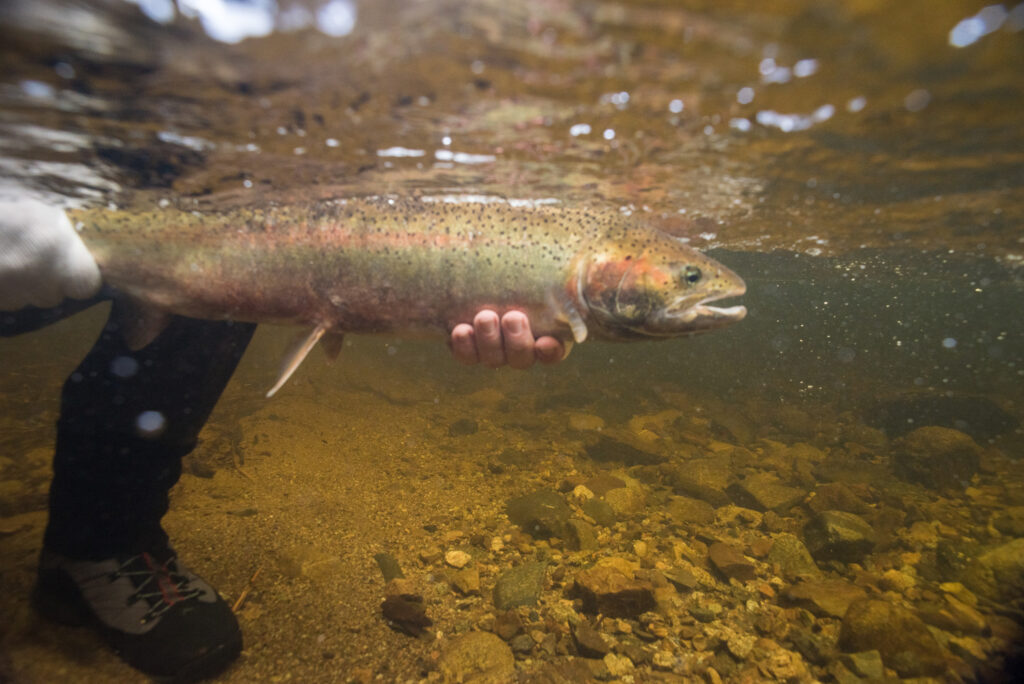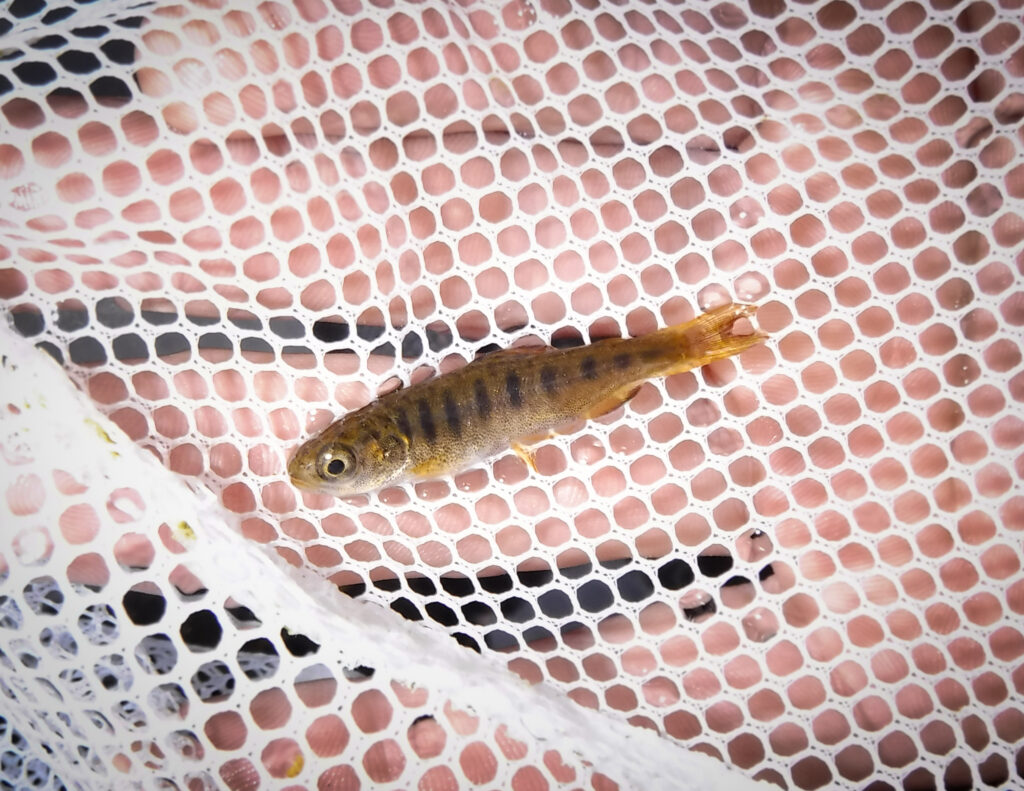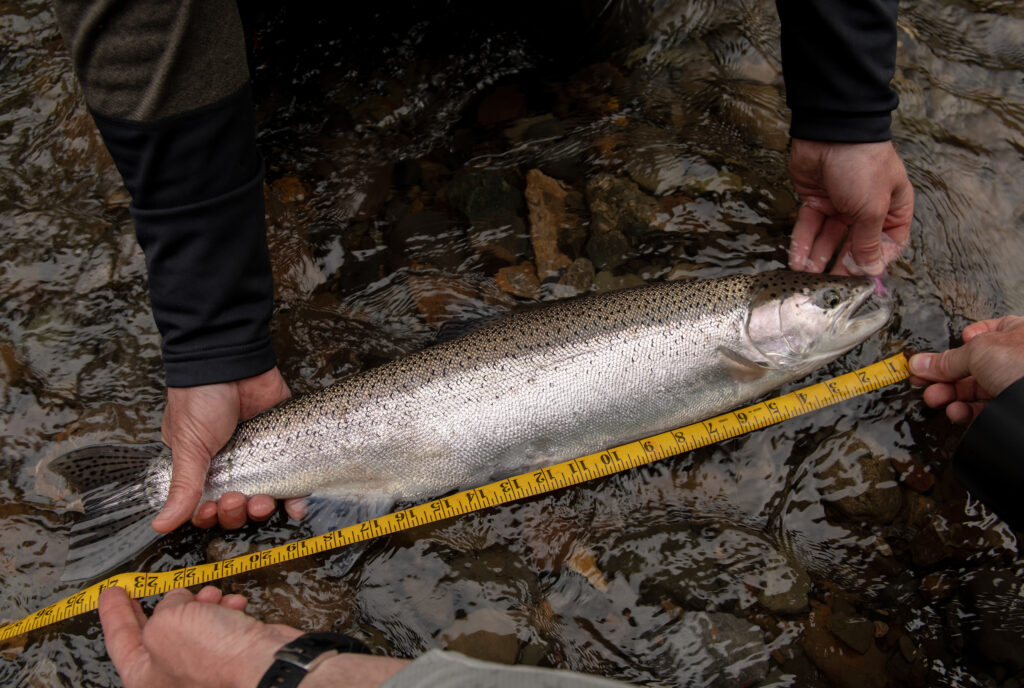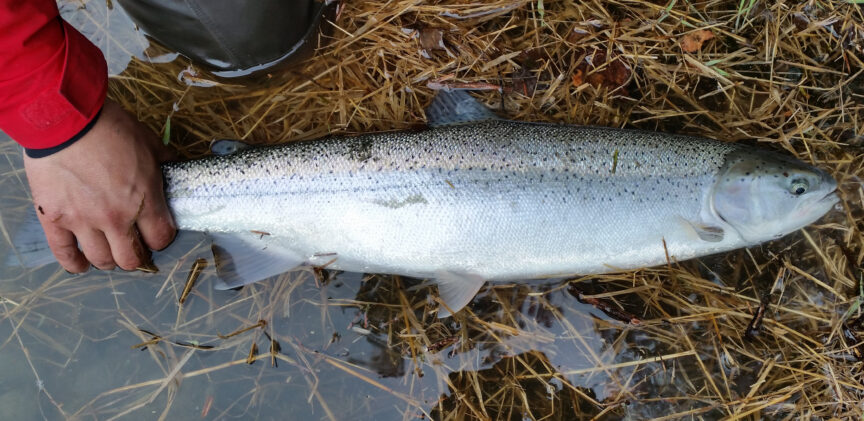Thanks to the efforts of Trout Unlimited Alaska’s (TU AK) Fish Habitat Project, Southeast Alaska now has two more officially recognized steelhead streams, as well as 12 more coho salmon streams! Official recognition means the streams now receive the conservation measures they deserve.
In early May of 2019, TU AK staff – in partnership with the U.S. Forest Service – surveyed three previously undocumented Baranof Island streams for the presence of steelhead, and were able to document steelhead in two of those streams. In late May 2019, TU staff spent two days surveying 14 small streams for the presence of juvenile salmonids, and were able to successfully document habitat use by coho salmon juveniles in 12 of them.

After the fieldwork was completed, TU AK Science Coordinator, Mark Hieronymus, built a case for of recognition of these streams by the Alaska Department of Fish and Game (ADF&G) through the Anadromous Waters Catalog nomination process.
The Catalog of Waters Important for the Spawning, Rearing or Migration of Anadromous Fishes, better known as the Anadromous Waters Catalogue or AWC, is the ADF&G’s current list of approximately 8,000 streams, rivers or lakes in southeast Alaska with anadromous fish habitat – “anadromous” meaning fish that are born in fresh water, migrate to the ocean to mature, and return to fresh water as adults to spawn.
Streams catalogued as having anadromous fish habitat receive basic conservation measures that anyone looking to develop must adhere to, so fish resources aren’t harmed in the construction process.

However, ADF&G also estimates that less than 50% of the anadromous freshwater habitat in southeast Alaska are currently listed in the AWC. In addition to gaps in actual habitat listing, many of the streams currently listed in the catalog are incomplete or incorrect. Until this fish habitat is accurately inventoried and all the species within them fully accounted for, the salmon, steelhead and other anadromous species which rely on the habitat are not afforded protection under State of Alaska law.
Inclusion in the AWC doesn’t put a stream off-limits for development. It creates a system that makes sense for developers and for fish. In some cases, timing windows are used to limit when riparian area construction projects can occur so that they are not undertaken during sensitive times for fish, such as during migration or spawning. For steelhead, this is from roughly March through late July, as this is a time when adult steelhead are migrating in freshwater to spawn, and when their eggs are developing in the streambed.
Similarly, if development is proposed in an area where the ADF&G knows anadromous fish are present but the extent of habitat use isn’t know, the Division of Habitat will survey the area repeatedly to determine if fish rely on the section of stream or river that is proposed for the project. If critical areas are identified, they are avoided.
The 2020 field season, while severely curtailed due to COVID-19, yielded 1 nomination for inclusion of steelhead and coastal cutthroat trout and 11 miles of their previously undocumented habitat in the AWC. That nomination has been submitted to ADF&G, and will undergo a rigorous vetting process including ADF&G and other agency staff review. If the nomination makes it through the vetting process, the previously undocumented habitat will be included in the AWC for the 2021 revision.

Since its inception in the early spring of 2018, the TU Alaska Fish Habitat Project surveys have resulted in the addition of five previously undocumented steelhead populations, bringing the total number of known steelhead-bearing streams in Southeast Alaska to 324. In addition to surveying for adult steelhead habitat use, juvenile salmonid surveys have resulted in 14 nominations for addition of species to an existing AWC stream and/or addition of new anadromous water bodies to the AWC.
When taken in total, three new species additions and nearly 17 miles of previously undocumented habitat have been nominated for inclusion in the AWC as a result of Trout Unlimited’s efforts. Trout Unlimited plans to continue this work, and invites the public to join in the effort to fill in data gaps and provide basic conservation measures for the fish habitat we all value.
You can follow our progress and learn how you can help at http://www.americansalmonforest.org/steelhead.html and http://www.americansalmonforest.org/citizen-science.html


